https://nasacademy.com/blog/article/learn-how-to-draw-cartoon-characters

Many of us are born into believing that drawing cartoons is only for the Walt Disneys of the world – but that’s far from the truth. Learning how to draw cartoon characters isn’t actually as hard as you might think, it’s simply about dumbing down reality to its most basic form, and adding our own creative touch.
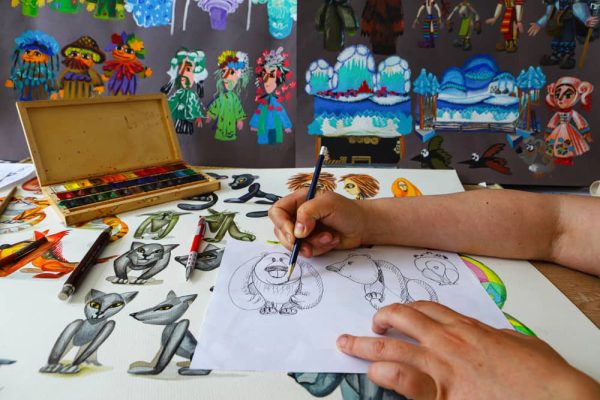
Unlike learning to draw with realism, simple cartoon characters don’t require as much detail, precision, and shading. They are a simple impression of what you see, and are a general idea that’s been dumbed down into a less-serious version of reality – they are not a copy.
And this is what makes cartoon drawing so creative, unique, and engaging. There’s a lot less pressure, work, and you aren’t confined to following exactly what you see. It’s a skill that can be learned by anyone, and with this step-by-step guide, you’ll be drawing better cartoons in no time. Grab a pen and some paper and let’s get started!
To begin creating your cartoon character, you’re going to want to create the head. Start by lightly sketching out a circle – and make sure to sketch gently with small strokes, rather than committing to a solid shape right away.
Once you have your base shape of the head, draw your guiding lines – one vertical line down the center, and then a horizontal one. These lines will help you create accurate proportions for your character’s face. Here’s an example from Imag.co:
 Image Credit: https://www.iamag.co
Image Credit: https://www.iamag.co
On the horizontal line, you’ll place both of your characters eyes at the same distance from the vertical line to keep them proportionate. And although we’re creating a ball-shaped head for this exercise, no matter what shape you use, the center line and eye lines will want to follow the curve of that shape.
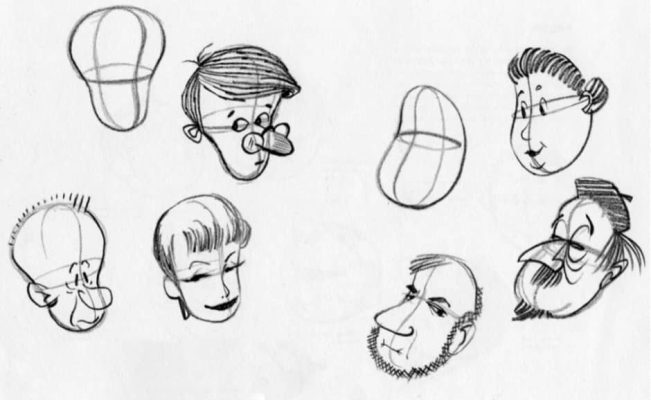 Image Credit: https://www.iamag.co
Image Credit: https://www.iamag.co
If you want to create a more complex shape for the head, you can also layer and combine different shapes on top of each other. Draw your basic circle with your guidelines, and then add a different shape that builds off of the bottom to create a jaw. It could be another circle to create a pear or peanut shape, or a square for a more defined, rigid look. By layering shapes, you can vary up the looks and complexity of your cartoon faces, and it allows you to better differentiate your characters.
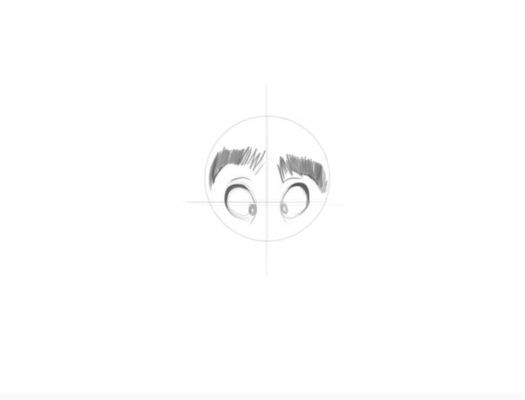
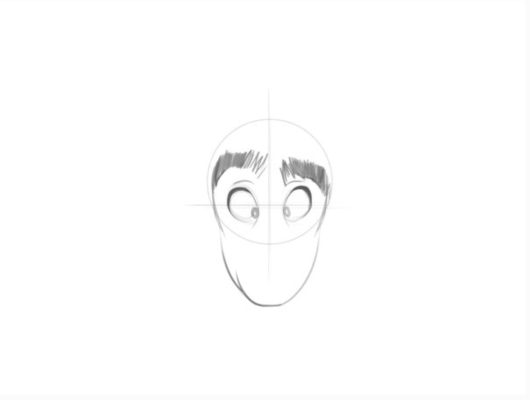 Image Credit: https://design.tutsplus.com
Image Credit: https://design.tutsplus.com
Once you have your head shape and guidelines for your features, it’s time to give your character a face! While features can be difficult to draw, it’s simply about practicing. To get better at it, simply look at different types of cartoon eyes, noses and mouths, and, try replicating them again and again.
Keep in mind that when drawing things like eyes and other facial features they are usually a lot more exaggerated in size, and simpler than real, human features. As you can see in the images above, cartoon features often only encompass the basic elements. For eyes, it’s just the outline, and the pupil. The nose is simply a half-triangle with a dot for the nostrils.
But overall, your character’s features will depend on what you want your style to be. If you want a simple cartoon, go for a minimal eye design with a simple circle and dot. If you want a more in-depth, unique look, add more details such as eyelids and lashes.
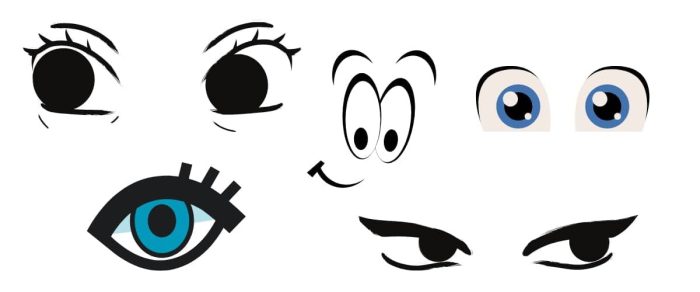
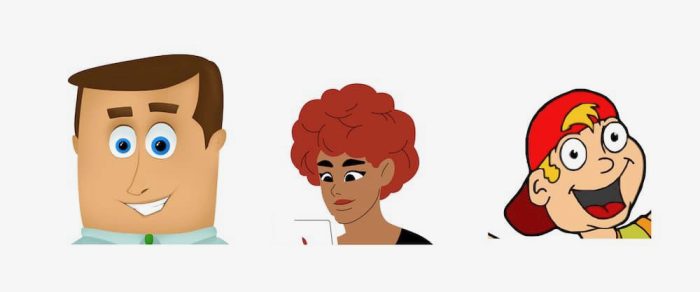
Hair is incredibly important in helping define your cartoon character – it’s part of how you establish their individuality, as well as visually represent their personality. When drawing hair, make sure to switch it up and make it different for each character, and pick a style that reflects who they are and what role they play. If they are professional, maybe have a slicked back, clean, and short hairstyle. If they are lazy and don’t care about their appearance, draw them with a lopsided hairdo, or add in some whacky flyaways.
Expressions are what bring cartoons to life – and expressing emotion is what makes cartoon drawings human, and relatable for people to look at.
Learning to capture emotion and expression does take practice, but it isn’t as hard as it might sound. In cartoon drawing, the simplest shift of an eyebrow or mouth corner is what can establish a whole new mood and expression in your character. Here are a couple to help you get started:
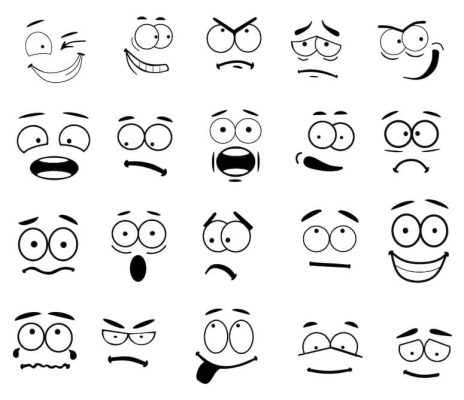 Neutral – You’ll want to start with creating a neutral expression for your character, and this will be their face when they are relaxed and not experiencing any emotion in particular. It’s the base for the rest of your character’s expressions.
Neutral – You’ll want to start with creating a neutral expression for your character, and this will be their face when they are relaxed and not experiencing any emotion in particular. It’s the base for the rest of your character’s expressions.
Happiness – Draw a large smile, with the ends of the lips curved upwards, and draw the eyes wide. Keep the eyebrows high, and even adding a slight, upward arch to the lower lashline can help create the look of happiness or joy.
Anger – Angle the eyebrows down towards the nose, flatten the tops of the eyes with the eyebrows, and add a frown.
Sadness – Sometimes adding a simple tear and turning the mouth into a frown is enough to show sadness. You can also shift the eyebrows so that they are angled up towards the middle of the forehead, opposite to how they would be in the angry state.
Surprise – draw the eyes wide and rounded, with small pupils. Arch the eyebrows high up and turn the mouth into a circle.
Take a bit of time to learn some techniques and fundamentals for how to better draw emotions in your character’s face – taking this extra step is sure to help you learn how to draw cartoon characters like a pro.
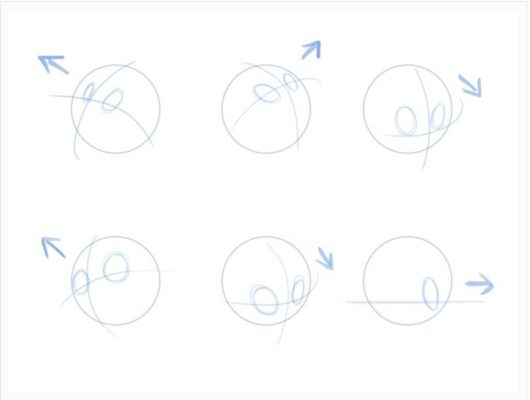 Image Credit: https://design.tutsplus.com
Image Credit: https://design.tutsplus.com
Drawing your characters from different angles, rather than just head-on, can really help to elevate the look and add life to your drawing – it’s also necessary if you’re going to be animating the character to help make sure you keep your proportions in check.
Now that we know the character’s face, let’s move onto creating a matching body. When it comes to crafting the body for your character, pay attention to who the character is, and create a body that reflects them. Artists will often use tropes and stereotypical body shapes, mannerisms, and, structures that exaggerate features to match certain qualities or personality traits. For example, if you have a highly-confident bully, they will often have large chests, small heads, and bulky arms. Or, if you have an innocent, sweet, young girl, she might be smaller and thinner, and have disproportionately large eyes.
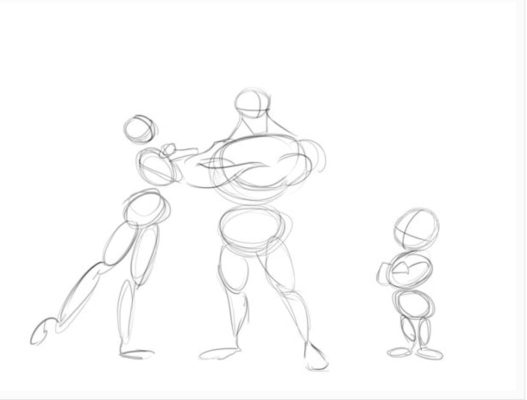 Image Credit: https://design.tutsplus.com
Image Credit: https://design.tutsplus.com
However, using stereotypical body shapes and visuals might not be the best thing for your character. Sometimes, creating bodies that actually completely defy those stereotypes are a great way to create interest in your character. For example, maybe the big, bulky man is actually a really big sweetheart on the inside – and the small, little girl who looks innocent is actually a raging devil. Sometimes, going against the grain can be an extremely effective way to draw your cartoon characters.
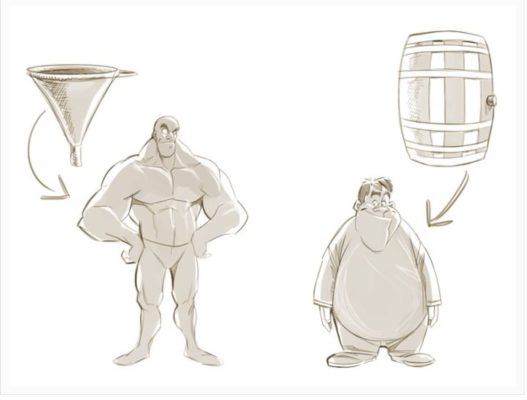 Image Credit: https://design.tutsplus.com
Image Credit: https://design.tutsplus.com
When you’re trying to craft a body for your character, establish their height, width, and proportions with shapes before filling in the details. As you can see in the image above, many artists will base the shape of their character’s body, and even their heads, off of recognizable objects and then build them out from there. You can use the classic pear-shape or inverted pear-shape that most designs will use – or use something different, like a tree trunk, a barrel, or a funnel.
What your character wears is another element that demonstrates their personality, and what role they play. When you’re coming up with the outfit design for your character, think about what a person like them would wear. If they’re rich, draw them wearing a suit or designer heels. Are they a student? Then draw them wearing jeans and sneakers.
It’s also good to keep in mind color psychology, and how the colors in your outfits will influence what the audience feels when they look at them. For example, purple represents richness or luxury, blue is calming, and red indicates risk. Picking colors and specific outfits that demonstrate your character’s personality is key to helping your audience identify with who they are.
Once you’ve established your body and your costume, the next step is to take your head and body, and draw them in different angles and positions. This way, you will get a full, rounded-out view of how your character looks in action.
While you might think drawing cartoons and human psychology are two completely different things, they are actually deeply connected. By understanding psychology and human behavior, you’re going to learn how to draw cartoon characters that your audience will connect with. This means you have to recognize how real people look, and what they physically do with their expressions and body when they feel a certain way.
So, take the time to study those around you, and get to know the human face. Look at how people’s features react with certain feelings. Get to know the lines of the nose and mouth. Notice how anger crunches the eyebrows, how sadness deepens the frown lines – and how you see that light sparkle in someone’s eye when their heart feels full.
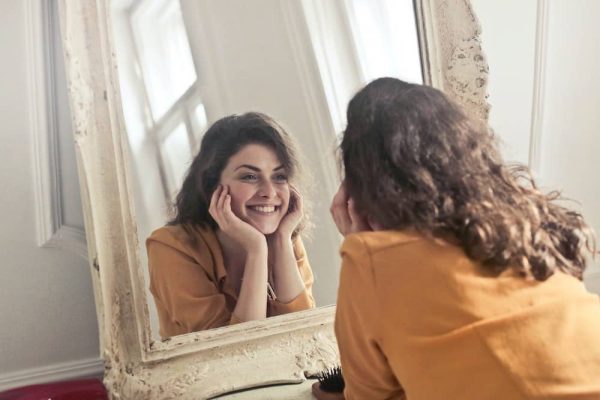
Along with facial expressions, notice physical movements as well. Take note of how people’s heads and bodies shift with certain emotions. Notice how people peer in and extend their neck when they’re interested, how they drop their chin to their chest when they’re sad – and how they squeeze their shoulders to their ears when they’re afraid.
Cartoons aren’t something we can fully relate to, since they are simple, imaginative illustrations. But adding these human elements is what will draw people in, and it’s what makes the best cartoons. Practice recreating different expressions by yourself in the mirror, take photos of people, and do whatever you can to catch how emotions shift and manifest in the body. Then, it just comes down to applying those observations, and matching them to your cartoon characters.
It’s easy to slip into making each character look the same when learning how to draw cartoon characters. But changing up features, placements, and shapes is a fundamental part of good character drawing – it’s what gives each character it’s own unique presence, look, and place in the story.
When drawing guidelines on your character’s face, sometimes it can be interesting to switch up where your center lines meet and where you place the eyes. Maybe they’re higher up to create a bigger chin, or lower to give them a larger forehead. Maybe the eyes are really close together, or really far apart. Maybe the curve of the head is closer to the top, or closer to the bottom, rather than being a perfect circle.
Switch up where the contours of your face indent and protrude, and also switch up the curves of the body shapes as well. This will help move you away from standard circles, squares, and perfectly centered features to give your cartoons a bit more character, uniqueness, and visual interest. By varying up and experimenting with different shapes, drastic angles or wild ideas, that’s how you eventually build your own technique and voice in your illustrations.
Cartoon styles vary significantly across the board. Just look at all of the different artistic techniques in your favorite comics or TV shows – each one is their own unique experience.
While you can do tutorials to learn the techniques, or guides on how to draw a cartoon person a specific way, what’s really going to help your work flourish, is practicing, finding your own style, and running with it.
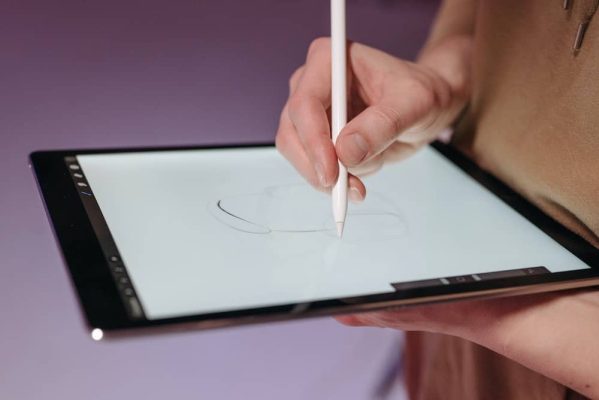
Use tutorials to get basics and techniques down, but then, you have to work to find your own voice. This simply comes through practice, and the repetition of drawing a series of characters, or crafting a world, and noticing the similarities and styles that come out naturally.
What kind of visuals are you drawn to? What makes you excited to pull out the pen and paper?
Sometimes, letting our mind run wild and then simply noticing how we interpret and regurgitate certain realities we see, is what helps define our style. As you find your style, you will naturally start to bring these identifiable elements throughout your work. And this is what will help you create consistency, and make your style something that people will recognize in the sea of cartoons out there.
Using this mindset when learning how to draw cartoon characters like a pro, is sure to help you build a cohesive, unique, and personal style in your work. But remember: when trying to find your technique, do not compare yourself. Your unique style and someone else’s are exactly that: their own, different styles. Neither is superior – they have different forms, different abilities, and different functions that make them needed in the world for their own reasons.
One of the best ways to get better at drawing cartoons is to watch them and get inspiration from other successful artists. Learn from the experts. Look at comics and really observe how the artists are able to capture emotion, and create an individualized character using certain shapes, and proportions. Try and keep a moodboard of some of your favorite designs to reference back to for when you need some inspiration in your own work.
Whether it be a quick doodle on the bus or a sketch for your next masterpiece – find some way to get yourself drawing every day. Building it into your daily routine as a habit is the only way to get better, come up with ideas, and learn new techniques – and it’s the only way to learn what you are drawn to the most. You don’t have to draw a Mona Lisa every day, you can do a simple cartoon head. You could draw a headless body, a house, a chicken – anything that helps you practice translating your ideas, into shapes on the page.
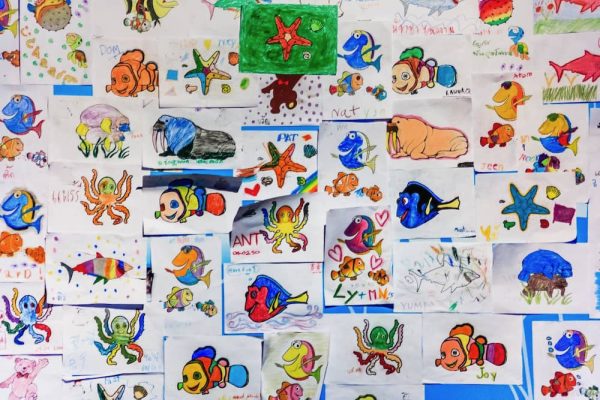
To build this habit, try keeping a notebook with you at all times and draw in the “middle” moments of life. Sketch while you wait for a train, while you drink your morning coffee, while you’re sitting bored in class (while still paying attention to your teacher, of course). Find every sliver of time you can to practice noticing proportions and perspectives, while experimenting so you can get your drawings closer to your vision each time.
If you’ve been looking for some more structured exercises to help you get in the habit of drawing cartoons, here’s a list of some simple exercises you can start with:
Grab a piece of paper and draw a bunch of random, different shapes and sizes of blobs on the page. Now, try and find a face in each one of the blobs, and turn them into cartoon characters.
Morph them into different characters and faces by drawing out your guide lines, and see what you can come up with! This is a great exercise to help you learn how to draw from your imagination, and practice turning nothing into something – which is, arguably, one of the most important roles of an artist.
If you want to learn how to draw cartoon characters, you need to start thinking in cartoons. If you’re out in public right now, look at people and places around you, and turn them into cartoons.
When doing this, pay attention to the structures of faces in different people – take into account the age, ethnicities, and genders of those you see. Then, using your impressionism skills, draw them in a simple 2D format without shading, and without trying to achieve perfect accuracy.
If you’re sitting in an office, turn the room, objects, and things around you into a cartoon-world version. Do this with photos of your family and friends, or yourself, and exaggerate the person’s innate, stand-out qualities to turn them into their own cartoons.
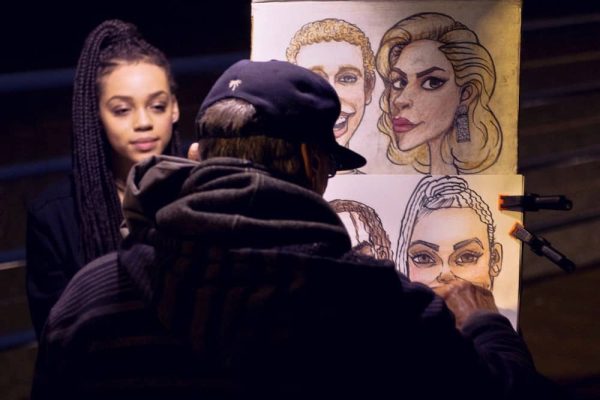
This exercise teaches you to draw complex things simply, and only take the essential features. It’s what will help you create characters that are visually recognizable and real, while also leaving you the creativity to exaggerate, and develop a look that is and always will be uniquely your own.
If you want to learn how to be a master cartoonist, check out Maria Malandrino’s Turn Your Loved One Into A Fairytale Character course.
Maria Malandrino, is a professional illustrator and character designer from Turin, Italy who has worked with Oxford University Press, Cengage, and Disney.
The Maria Malandrino Academy will not only teach you how to structure your workflow as an artist, but Maria will also walk you through creating an entire character design – from start to finish.
Whether you’re a beginner or pro, sign up today for Maria’s course and begin your journey to improving your work, and finding your own path as an illustrator.
By Team Nas Academy
By Team Nas Academy